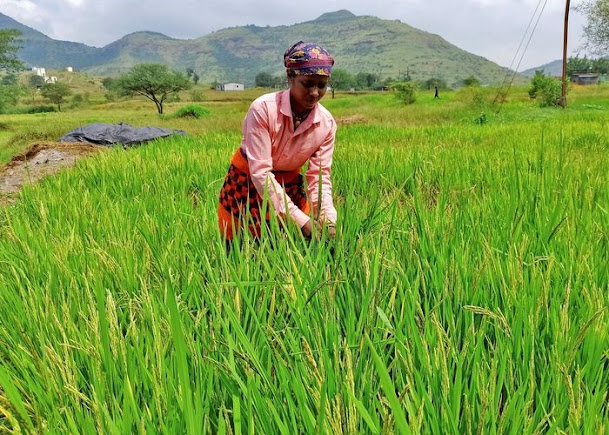For Food Price Inflation Clues, Watch India
India’s 2023 harvest is an underappreciated risk to global food security. El Nino could again disrupt the critical monsoon season.
By Megha Mandavia
 A World Bank report noted that export restrictions by India could raise world rice prices. Photo: STAFF/REUTERS
A World Bank report noted that export restrictions by India could raise world rice prices. Photo: STAFF/REUTERSIndia’s monsoons are an essential economic indicator for a country that relies on rainfall to feed 1.4 billion people.
A poor season can topple governments and threaten global food security—especially when export restrictions on food have become sticky despite easing food prices.
U.S. and Australian forecasts now point to an increased probability of an El Nino episode in 2023.
El Nino is a periodic weather event that drives monsoon clouds away from India—and has historically hurt food production.
A subpar monsoon is an underappreciated threat to global food security and inflation.
That is particularly true with India’s own general elections looming, which could lead to higher political pressure to restrict grain exports.
Earlier in April, private forecaster Skymet Weather Services and the Indian Meteorological Department both forecast lower rains in India this year—94% and 96% of the “long period average” for 2023 respectively.
While the IMD considers a 96% monsoon to be within the normal range, it still expects El Nino to develop during the 2023 monsoon season.
Meanwhile Australia’s Southern Oscillation Index, which gauges the strength of El Nino and La Nina events, dropped to minus-2.3 on April 9 from plus-22 in mid-February, according to data from brokerage CLSA.
Consistent values below about minus-8 indicate a high probability of El Nino.
And last week, U.S. government forecasters also issued an El Nino watch.
All of this raises the probability of further food export restrictions in India.
According to CLSA, a 5% swing in food prices boosts Indian retail inflation by about 2 percentage points.
In an election year—and with inflation already running above trend for most of the past year—further food price inflation could prove difficult to ignore.
Andrew Whitelaw, founding director of Episode 3, a data firm that tracks agricultural markets, thinks more trade restrictions on Indian food exports would be unsurprising if crop yields underperform this year.
Last year, India banned exports of broken rice—used primarily as animal feed—and imposed a 20% duty on exports of other grades of rice to boost domestic supply and contain inflation after below-average rainfall in key producing areas.
The restrictions covered 5% of global rice exports.
India also banned wheat exports.
According to a World Bank report released in February and updated last month, further restrictions by India could raise world prices of rice by 4.3%-12.1%.
Should exporters such as Thailand and Vietnam respond by also banning exports, that could result in a multiplier effect that pushes up prices up as much as 20%.
Food prices have cooled somewhat in recent months.
But trade restrictions are a different story.
Even a full year after the outbreak of war, the World Bank found that 101 separate restrictions on food exports globally—including quotas, licenses and outright bans—remained in place.
While the world’s food trade has adjusted to new geopolitical realities, easing prices are a fragile trend at best.
Food prices were a headache for much of the world in 2022.
A new round of pain isn’t inevitable, but predicting the weather is a notoriously difficult business.
Investors would do well to keep one eye on India’s harvest in the months ahead.

0 comments:
Publicar un comentario